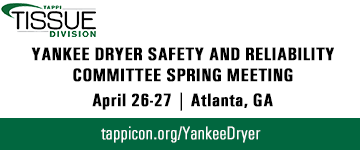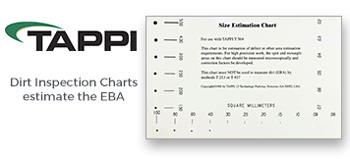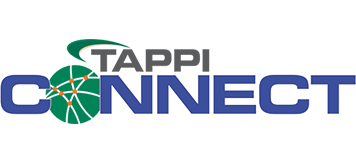 Boldt
Boldt

During this crisis our industry is giving back to help others in need. Hear their stories. Share their stories.
PAPER MACHINE REBUILD IN THE TIME OF PANDEMIC
Safety, flexiblity, and speed paved the way for success
The Boldt Company had a narrow window of time to rebuild a paper machine for ND Paper — just 45 days to convert a bleached lightweight coated asset to produce unbleached linerboard and corrugating medium. Just 45 days to shutdown production, bring in skilled tradespeople, and complete a broad scope of work, from the wet end to the dry end of the machine. Just 45 days that happened to hit at Wisconsin’s peak of a global pandemic.
Pre-planning for the project started in fall of 2019 and construction crews were on-site in January of 2020, but the work plan called for hundreds of tradespeople to join the 250 workers employed at the Biron Division in Wisconsin Rapids within five months. Precautions such as social distancing, wearing protective masks, and daily temperature checks suddenly had as much importance as job site safety and technical machine specs.
As ND Paper and The Boldt Company leaders were marshaling their COVID response teams on parallel tracks, ND Paper made the decision to continue work on the machine install. Both companies had goals of maintaining the safety of their workforce, yet advancing the work for the benefit of their customers.
“Our precautions were not just about protecting the health of our employees, but also about protecting their livelihoods,” said Dave Falk, vice president and general manager of the ND Paper Biron Division. “It was essential that we moved forward with this project as speedily as we could, but also in a safe environment from a COVID standpoint.”
With that in mind, teams started solving the problems of how to work effectively within a pandemic.
At Boldt, the company created a task force to address facilities and technology, then tapped experts in its own technical services division to pull together a center of excellence. “We quickly accessed the best thinking in the industry to address all the issues surrounding the pandemic,” said Will Lichtig, Boldt’s executive vice president, performance & innovation.
“Our guiding principles were the health of the individual and the health of the organization,” said Holly Lifke, Boldt’s executive vice president of human resources. To make a complicated situation more complex, guidelines needed to be established for craft workers at job sites in states with varying rules. In addition, Boldt teams worked closely with project owners, many of whom were in operating essential industries.
ND Paper was one of those essential industries, and its leadership soon implemented a corporate team that met daily and into weekends to develop a comprehensive COVID 19 policy. Team members then adapted corporate guidelines for specific situations at the Biron mill. “To be successful, you need a leadership team that believes the pandemic is a serious matter and takes rapid action. We had that from the top down in our organization,” Falk said.
In addition to preparing the mill for their own employees, ND Paper also had to consider the health and safety of 650 tradespeople working across three shifts needed to convert the B25 machine to produce unbleached paper.
“Everything we did was about risk mitigation, we didn’t make any differentiation between contractors or our team members,” Falk said.
Mill employees and contractors were all required to go through health screenings, temperatures were taken prior to entering the facility, anyone exhibiting symptoms was required to report to a supervisor and return home to quarantine. A mandatory face masking policy was instituted well before the Centers for Disease Control and Prevention recommended masking. These provisions also applied to all skilled trade workers.
The Boldt Company was responsible for mechanical and civil work on the paper machine, requiring a team of millwrights, ironworkers, carpenters, concrete workers and general laborers.
“It required understanding, willingness, flexibility, and a keen focus on the well-being of the team in order to maintain the viability of the project,” said Ken Wilson, Boldt project manager. “Construction had to be planned around worker placement and proximity to one another in order to achieve social distancing wherever possible.”
Boldt crews used corporate guidelines and ND Paper requirements to change safety protocols on the job site. Among the changes that were made:
- Pre-employment screening for worker origin, previous work locations, potential exposure and personal habits
- COVID information/requirements added to onboarding/safety orientation
- Posted signage and informational materials
- Additional PPE supplied (gloves/masks/face shields)
- Additional break areas to maximize spacing
- Sanitizers and cleaning solutions available project-wide
- Staggered breaks reduced the likelihood of people congregating
- Crew-specific safety meetings (in lieu of all-hands)
- Frequent daily cleaning and disinfection of office trailers/break/work areas
- Dedicated tools, Personal Protective Equipment (PPE), and fall protection for each employee
- Additional portable toilets with increased cleaning frequency
- Dedicated hand wash station with heated running water
- Minimized meeting attendee numbers and utilized online meetings where possible
According to Wilson, Boldt coordinated between trades to prioritize activities that needed to occur within the 6-foot distance. If distancing could not be maintained, trades workers added face shields and masks to their usual PPE.
“When we implemented the mask policy, they had masks ready to go,” said Mitch Wayne, ND Paper project manager. “We didn’t have to change our deadlines and we were able to keep working in the same manner prior to the pandemic.”
“We were initially concerned we would have an outbreak and our hand would be forced to shut down the project, so we were and are following our policies to make sure that doesn’t happen,” Falk said. At the peak of construction there were as many as 900 mill employees and contract workers on site over three shifts.
The results speak for themselves. Boldt was able to deliver its scope of work under budget and several days ahead of schedule. During the construction process, there were no incidences of either construction team members or mill employees contracting the new coronavirus while on site.
![]()
Inside this Section
- PIMA 2020 Award Winners
- Donate Now
- PRESS New Releases Virtual Party
- 2020 Association Awards
- 2020 Fellows Induction Ceremony
- TAPPI Press Industry Appreciation Program
- Contact Training
- Assessing Dryer Performance Using TAPPI TIPs
- Thank you for your continued support of TAPPI!
- Attendance Materials
- 2022 Association Awards
- Division Awards - Coating and Graphic Arts
- Scholarship Winners
- TAPPI Fellows
- Division Awards - Paper and Board
- Division Awards - PIMA
- Division Honors - Process and Product Quality
- Division Honors - Process Control
- Women In Industry 2022 Award Winners
- cpc-election-mark-mitchell-voting-sheet84.pdf
- cpc-elections-joe-slattery-voting-sheet69.pdf
- cpc-elections-mike-carver-voting-sheet84.pdf
- cpc-elections-joe-slattery-voting-sheet46.pdf
- Student Coffee





